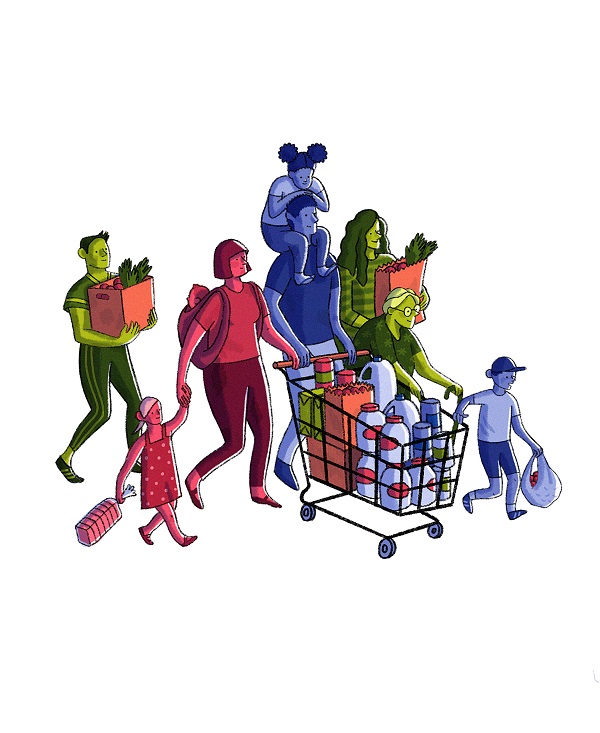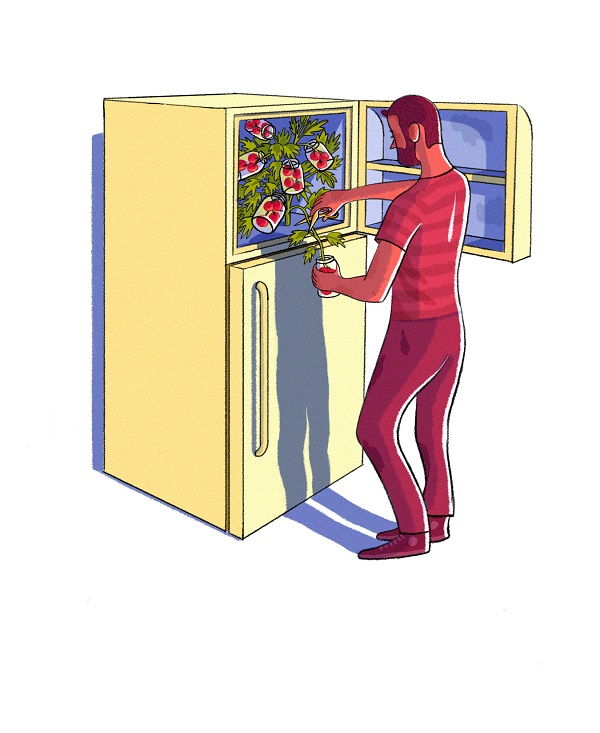Surviving on a low income doesn’t mean sacrificing local, seasonally grown, whole foods.
Given the skyrocketing cost of living in Sonoma County, it can be a challenge for low-income families to eat healthy, locally sourced meals. But, it isn’t completely impossible. Anna, a 36-year-old single mother, takes a creative approach to meal planning at home.
“It can sometimes be a fun challenge,” Anna says. “I enjoy cooking creatively though my extremely picky five-year-old isn’t always a fan.”
Anna and her son are two of nearly 30,000 low-income individuals in Sonoma County who qualify for the Supplemental Nutrition Assistance Program (SNAP), also known as CalFresh (previously called Food Stamps). Each month Anna, a self-employed student and full-time single parent, is allotted $260 in SNAP benefits for food purchases.
She’s not alone. In the United States, more than 45 million people receive annual SNAP benefits: mostly children, seniors, and people with disabilities. Although SNAP benefits are modest (averaging roughly $1.40 per meal), the program is vital to combating food insecurity. In addition to whole food items, SNAP benefits can be used to buy seeds, plants, and even soil, so that recipients can grow their own gardens.
If the latest iteration of the new farm bill passes, Congressional If the latest iteration of the new farm bill passes, Congressional Budget Office documents indicate that SNAP could see roughly $23 billion in cuts to the program, leaving potentially one million low income families at risk of losing benefits. Additionally, the bill would enforce strict work guidelines, requiring SNAP participants between 18 and 59, who are not disabled or raising a child under the age of six, to work and/or participate in a work program for at least 20 hours per week. The proposed cuts could be dire for those who depend on SNAP and are still struggling to make ends meet. (At press time, the bill was set for a vote by the U.S. House of Representatives on June 22.)
Despite her SNAP benefits, Anna, who lives with roommates in a rental in West County, says she can’t always stretch her food budget to the end of the month. She supplements from food banks, grows her own produce, and used WIC (Women, Infant, and Children program) when her son was younger. Ever resourceful, she also buys in bulk, freezes excess garden produce, and plans meals in advance based on the staple items she finds.
“Some months, when I’m well-organized, I try to hit up Grocery Outlet,” she says. “What I can’t find there, I find at Trader Joe’s.” Her last-ditch option is Safeway, which she says is a more expensive option.
The good news is that because Sonoma County is home to nearly 300 farms and many innovative nonprofit programs, Anna and others in her situation have options for access to healthy food. We dug into a few to see what they’re all about.
MARKET MATCH
Like Anna, many SNAP recipients use their benefits to shop for fresh local produce at farmers’ markets. For those using Market Match, it is possible to stretch benefits twice as far.
Market Match is a program that doubles SNAP dollars at participating farmers’ markets. Shoppers simply check in at the market’s information booths with their EBT (Electronic Benefit Transfer) cards to get tokens that are matched dollar-for-dollar for fruits and vegetables at the produce stands.
Launched in 2009 by Roots of Change and now administered by the Ecology Center in Berkeley, most of the funding for Market Match comes from the California Department of Food and Agriculture with a goal to “incentivize low-income shoppers to spend their benefits on California-grown fruits, vegetables, and nuts, and become lifelong shoppers” of locally grown products. The program also benefits local farmers with increased sales.
Market Match restricts purchasing to fruits and vegetables. Although Sonoma County farmers’ markets accept SNAP and WIC vouchers for their vendors, not all local farmers’ markets participate in Market Match (see the listings for participating markets on pg. 44). Those markets that do participate have a daily maximum of benefits allowed. In Sonoma County most participating markets have a limit of $10 (which still nets $20 worth of fresh produce). The biggest bang for your buck is the Santa Rosa Community Farmers’ Market in the Veterans Building parking lot, which has an upper limit of $20 matching dollars per visit. –marketmatch.org
VALUE MARKET REFB
SNAP and WIC participants—and anyone participating in Medi-Cal or any Redwood Empire Food Bank (REFB) food distribution programs—can also shop at the Value Market, a low-cost food store on site at the Redwood Empire Food Bank.
Value Market carries a variety of high-quality organic and local foods at reduced rates for their low-income customers. For example, organic strawberries run about $2.39 and a whole Rocky Free Range Chicken can be purchased for $7. Value Market carries local Clover Sonoma dairy products and Amy’s Kitchen organic frozen meals for those needing quick-to-fix lunch items.
Maggie Sowell, communications manager at REFB, says that Value Market sees an average of 2,240 customers each month and that roughly 30 percent of Value Market sales are made with CalFresh and WIC benefits. The REFB also distributesan average of 45 free grocery boxes through the Value Market each month to individuals in need of emergency food assistance. Additionally, the market offers a daily selection of free bread and produce to all shoppers. REFB also operates school pantries at 13 Sonoma County schools, providing additional sources of local produce to lowincome families with children. –refb.org/our-work/programs/value-market/
ADDITIONAL RESOURCES
SNAP recipients can also purchase locally grown produce at reduced rates through Petaluma Bounty. The nonprofit runs a sliding-scale farmstand with 30 percent discounts offered for low-income shoppers and 50 percent discounts for CalFresh customers for purchases up to $20. Petaluma Bounty also provides the option for SNAP recipients to purchase weekly CSA boxes for $11 per week. Eligible customers can join their CSA for a 30 percent reduced fee of $15.40 per box.
Aside from purchasing affordable food, there are several ways to eat healthy all month. According to Ariel Muirhead, registered dietitian and health educator at the Center for Well-Being in Santa Rosa, meal planning is key. “Batch cooking and making enough food for multiple meals can help save time,” she says.
Muirhead suggests buying dry goods in bulk, buying seasonally for vegetables and fruits, and buying more whole foods rather than processed foods in order to stretch SNAP benefits.
Another great resource for people eating on a budget of $4 per day is Good and Cheap, a free PDF cookbook by Leanne Brown that’s available in both English and Spanish. The book has great tips on healthy eating. Plus, each recipe includes the estimated cost of the meal.
“This book isn’t challenging you to live on so little,” Brown writes. “It’s a resource in case that’s your reality.” –leannebrown.com
Article resources:
Fast Facts
- 16,000 households—the equivalent of 28,908 individuals—currently receive SNAP benefits in Sonoma County (Source: Sonoma County Human Services)
- $3.75 million: Total SNAP benefits paid to clients in Sonoma County (Source: Sonoma County Human Services)
- Monthly income eligibility limits to qualify for SNAP: One person, $2010; Two people, $2709; Three people, $3405; Four people, $4100 (Source: mycalfresh.org)
- $61,907: Median income for Sonoma County in 2016 $73,615: Projected median income for 2020 (Source: Sonoma County Economic Development Board)
- $32,250 is considered very low-income in Sonoma County; $21,200 is considered extremely low-income (Source: Sonoma County Housing Authority)
- $384 to $609: Monthly food costs range for a family of two (Source: USDA)


